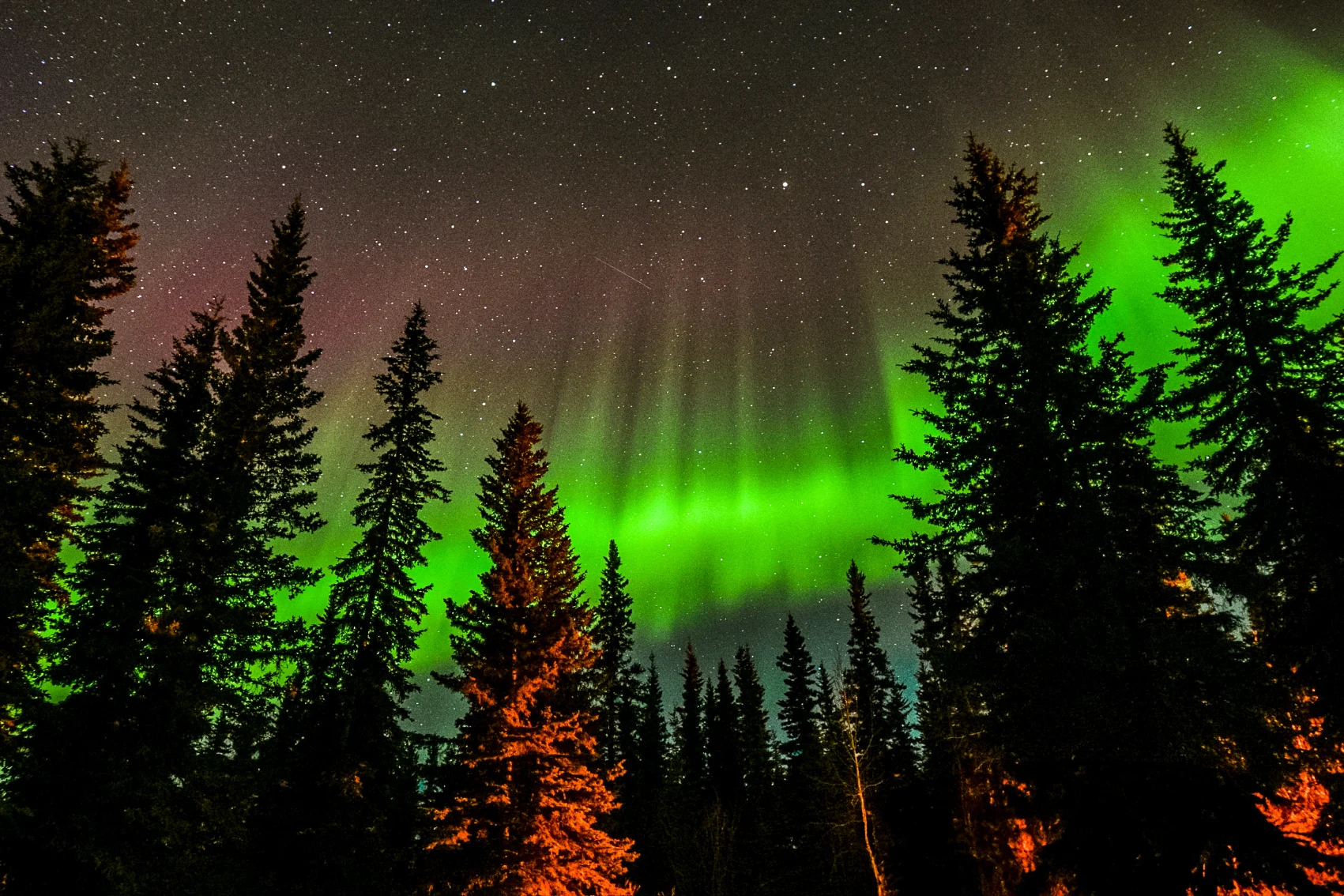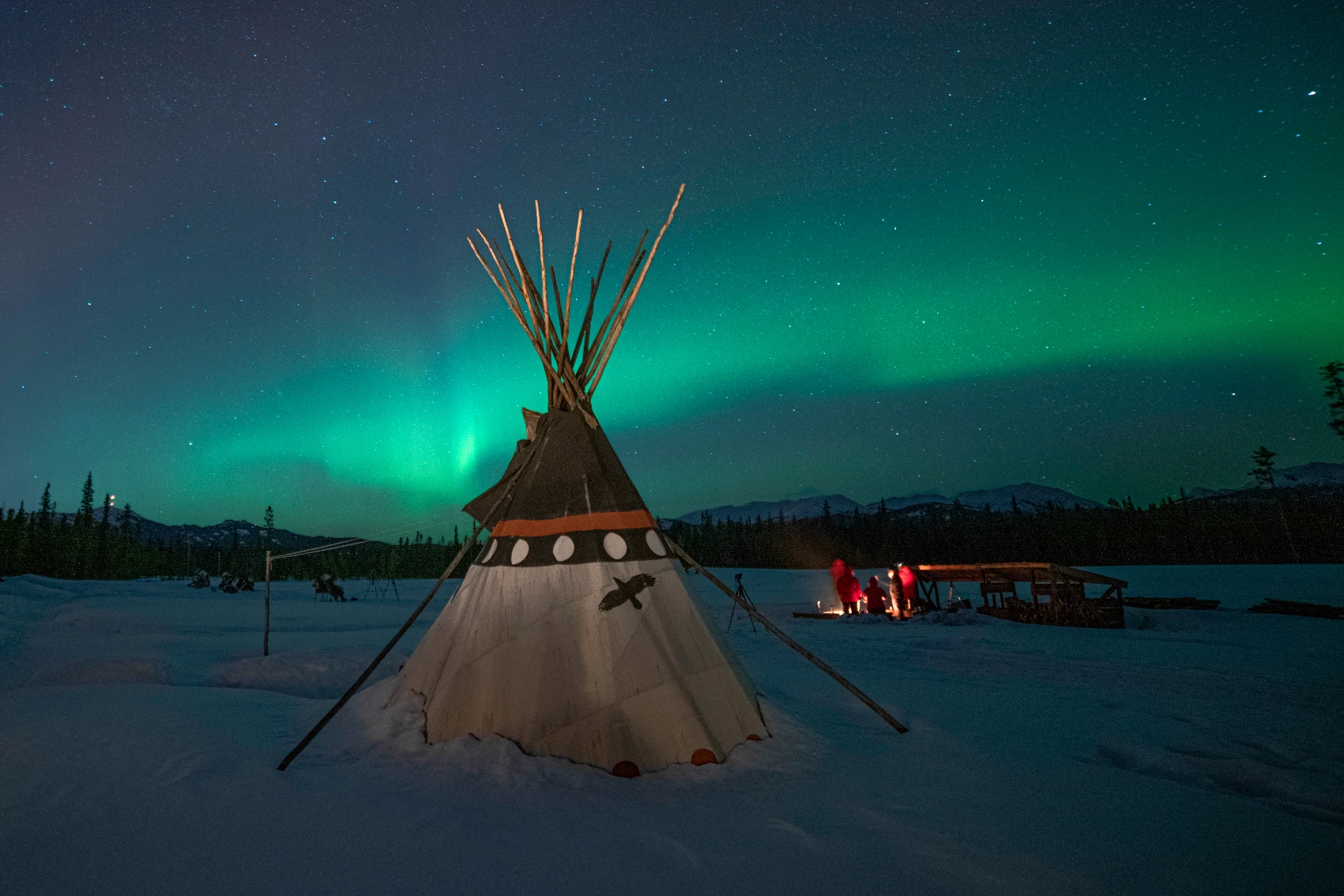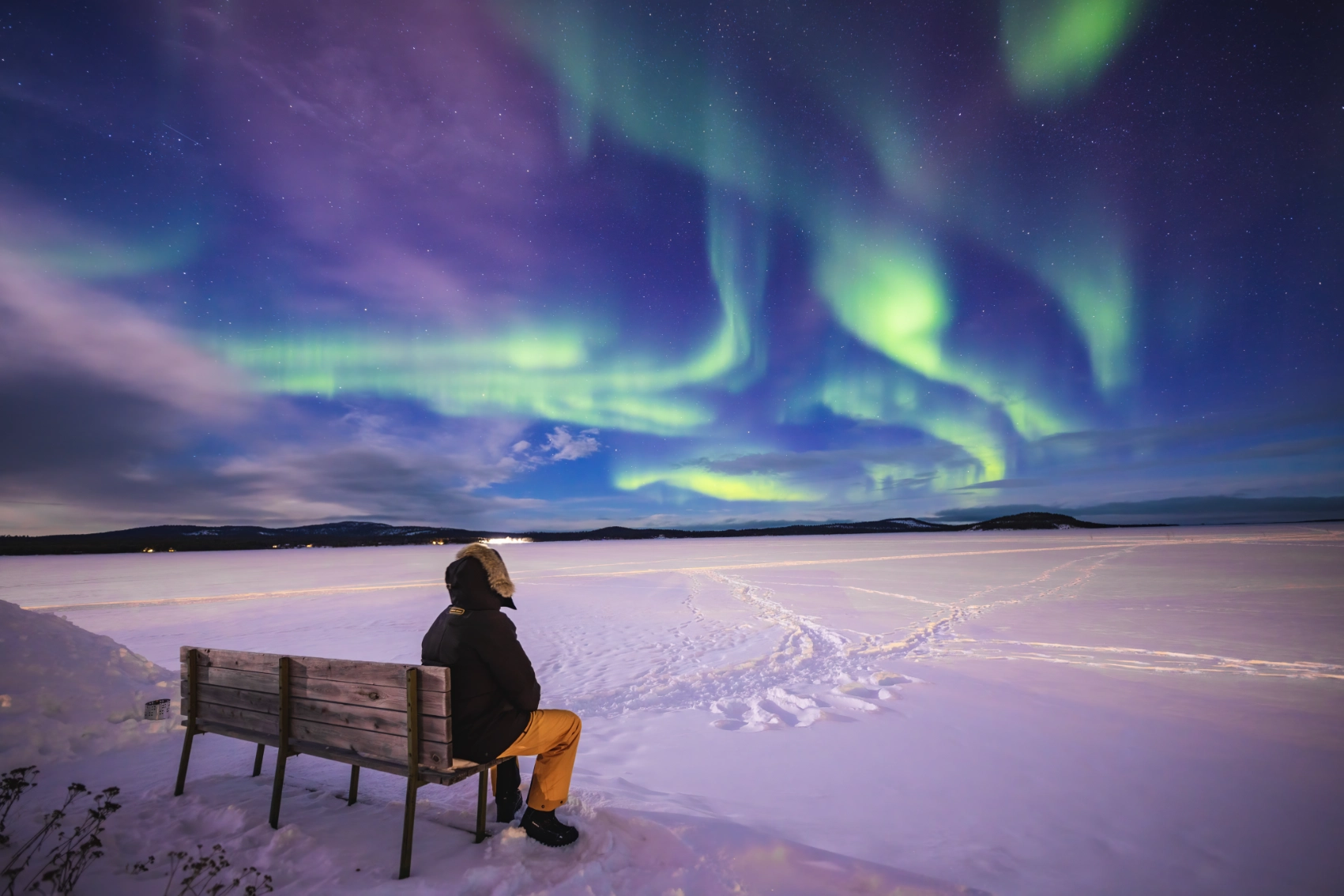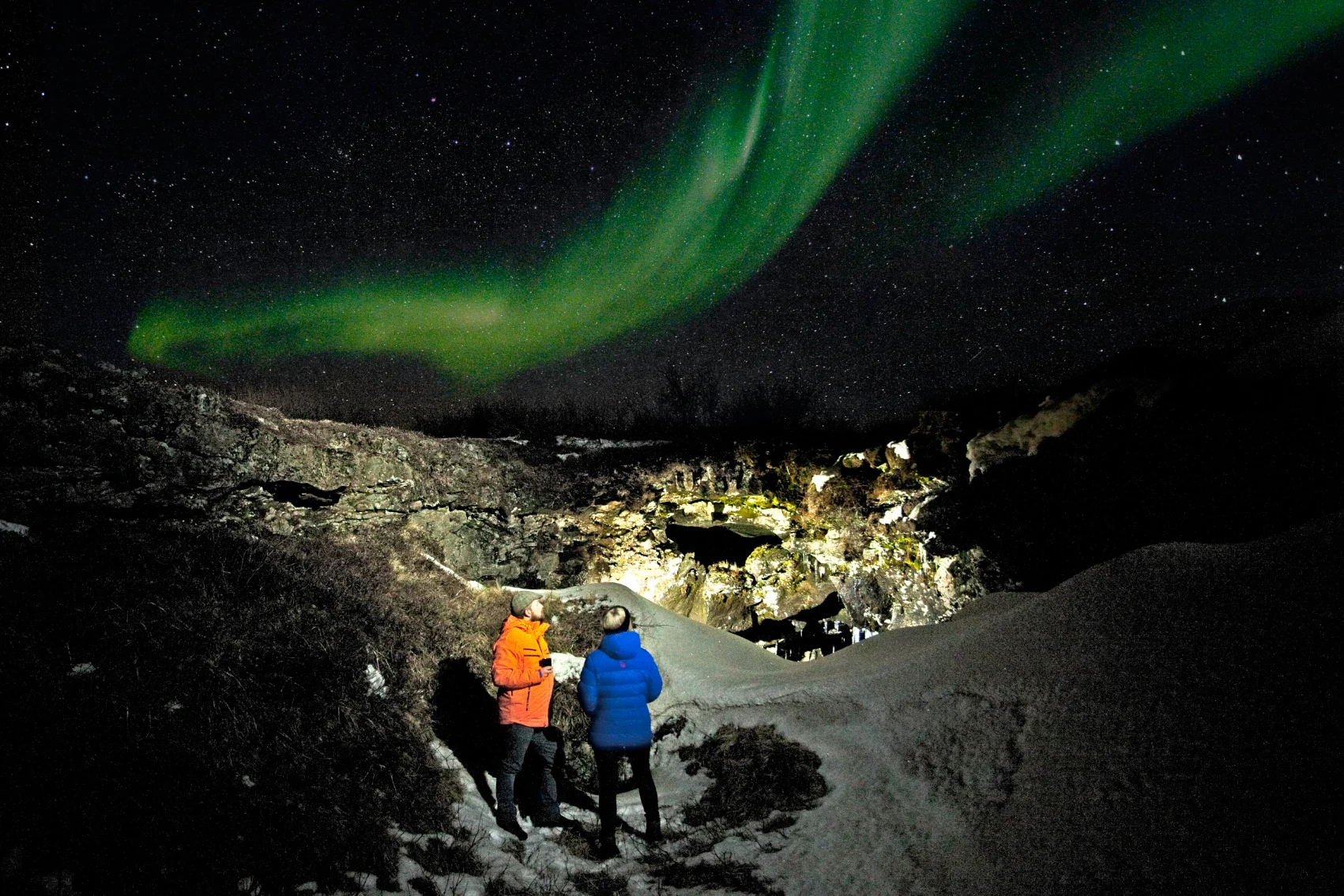One of the most unusual and magnificent natural phenomena on the planet, the aurora borealis is probably high on your travel bucket list. This ultimate guide has everything you need to know if you're travelling to find the aurora, from the best places to see the Northern Lights to top tips for viewing the aurora.
What are the Northern Lights?
The Northern Lights are a mesmerizing phenomenon of shimmering green, blue, and purple light that's the result of electrically charged particles from the sun colliding with gases in the Earth’s atmosphere. Looping around the Earth and stretching far into space are invisible magnetic shields that repel most of these charged particles, but near the poles, like halos around either axis, these magnetic fields curve down, which is where some of the particles slip through into the atmosphere.

Best places to see the Northern Lights
It’s in those polar regions, in the Auroral Oval, that light is released when the particles react with gases like oxygen and nitrogen. Usually, the aurora sits between 80km (50 mi) and 240km (150 mi) above the Earth’s surface. Its colours reveal its altitude — blue light means it’s less than 96km (60 mi) overhead. As its altitude increases, the colour shifts from purple to green and finally red, above 240km (150 mi).
Alaska, United States
Directly beneath the Auroral Oval, Fairbanks, Alaska, is one of the best Northern Lights viewing locations in the world. In the pine- and snow-covered mountains surrounding the city are steaming natural hot springs. Here, 360-degree vistas of the night sky can be your evening entertainment while up to your ears in warm, mineral-rich water.
When to see the Northern Lights in Alaska
Visit from late August to April, but the most colourful displays usually appear between December and March. Fiery red foliage blankets the temperate rainforests in fall, and August is a busy time for iconic North American animals, including foraging bears, migrating orcas, and swimming sea otters. The crowds vanish in October, and after winter’s Yuletide celebrations, festival season kicks into action through January and February. Warmer days in spring signal that it's time for Arctic foxes to start courting and chunky walruses to follow the retreating sea ice north. On the first Saturday of March, you can cheer for the Iditarod Trail Sled Dog Race.

Experience it for yourself on: Alaska in Winter: Northern Lights & Dog Sledding Adventure
Canada
Far-away constellations, moonlight, and the green celestial fires of the aurora borealis have ancient connections with Canada’s Métis ancestors. Do as the Indigenous community once did and settle down for a tea ceremony beneath the dark skies. While you sip, hear starry-night tales of legend, folklore, and survival.
When to see the Northern Lights in Canada
Prime aurora viewing in Canada is between September and April, but in some parts of the country, such as Alberta, it’s possible to see them year-round. The Northwest Territories, Yukon, and Manitoba are also hot spots. In the fall in Churchill, you catch the mass polar bear migration, too. Grizzly bears linger around the Yukon’s rivers, filling up on salmon from late September. Off the coast of British Columbia, the ocean fills with passing orcas and humpback whales. When the Great Lakes freeze over, long-standing winter sports make their yearly comeback, including traditional dog sledding and ice fishing. At higher altitudes, dry powder snow dusts the slopes for world-class skiing.

Experience it for yourself on: Canadian Rockies: Northern Lights Winter Explorer
Finland
Picnics are done differently in Finnish Lapland. In the frozen, wide-open wilderness of Kuoska, reindeer sausage and smoked salmon are turned over a crackling campfire. Fire-side snacks and traditional delicacies washed down with a warming mug of hot chocolate pair perfectly with a dancing aurora sky.
When to see the Northern Lights in Finland
Northern Lights activity usually takes place between late August and April in Finland. In the fall, you can catch the ruska, what the Finns call the colourful turning of the leaves. Foragers fill their baskets with berries and mushrooms, while the elk have a final snuffle for woodland treats before hiding away for winter. As the daylight hours increase, after the winter wonderland buzz, it’s a great time to do some fatbiking or watch fluffy brown wolverines bouncing through the snow. Golden sunshine draws everyone out of their houses for days filled with open-air activities like snowshoeing and ice fishing.

Experience it for yourself on: Lapland: A Family Winter Adventure
Iceland
Away from the city lights, where hardy Icelandic horses graze on the flat, grassy plain, the night is as still as it is dark. Low-lying cottages in the sleepy countryside offer a snug refuge for awaiting the arrival of the dancing green glow.
When to see the Northern Lights in Iceland
Aurora displays can be witnessed from late September to early April in Iceland. But for the showstoppers, it's best to visit in the depths of winter, from November to February. Cooler months are the optimal time for escaping the chill with a dunk in the natural thermal pools, especially after spending the day hiking glaciers, ice caving, and snowmobiling across the Langjökull ice cap. It’s also the season for frozen waterfalls and Arctic foxes bounding through the snowy highlands. A unique sight seen only in the fall is when moss-covered boulders filling Iceland’s lava fields turn fiery red and orange. It’s a striking view, especially against the backdrop of a crisp, blue daytime sky.

Experience it for yourself on: Iceland Northern Lights & Golden Circle
Greenland
Icebergs and glaciers glow green beneath the light of the aurora borealis in Greenland. According to native legend, the glowing lights appear when the souls of the dead play soccer with walrus heads in heaven, which is why they’re known as arsanerit in Greenlandic, meaning the one who plays with the ball.
When to see the Northern Lights in Greenland
The night skies are illuminated between August and April. With the growing darkness and mild remnants of summer, fall is a sweet spot for visiting southern Greenland. Burning gold tundra spreads across the landscape, decorated with Arctic poppies and intense blue gentians. Even when there’s little or no sun during the depths of winter, celestial light bounces off the snow and illuminates areas of Greenland.
There’s a unique way of living at this time of year, with snowmobiles and dog sledding as the main mode of transport. Hiking boots are swapped for snowshoes or skis, fishing takes place through ice holes, and boats are launched for winter sailing. Swooping into their nests for spring are more than 60 species of hardy Arctic birds. It’s a time of striking contrast with distant hills still dusted in snow and mammoth icebergs keeping their form, but patches of grass and wildflower blooms are also rearing their heads.

Experience it for yourself on: Across the North Atlantic: Iceland, Greenland & Labrador
Tips and tricks for seeing the aurora
Just like stargazing, the best conditions for seeing the Northern Lights are when the skies are at their darkest. Wait and watch in the dead of night, away from bright city lights. One of the best Northern Lights tips for beginners is to watch out for a full moon and clouds because these dampen the aurora’s glow.
Aim for the equinoxes. In September and March, the sun and Earth align in a way that creates a boost in solar activity, making the Northern Lights extra bright. Also, roughly every 11 years, the sun completes a cycle of high and low magnetic activity. At its highest, the aurora borealis is more prominent that year, known as the solar maximum.
If you’d rather save the science for the experts, search for a KP index online, which is like a cheat sheet that tells you the best time to see the Northern Lights. Apps with easy-to-understand Northern Lights seasonal forecasts also help increase your luck. It's still impossible to guarantee a sighting — that’s nature after all.
Other glow-getters
The Northern Lights aren’t the only otherworldly wonder that dazzles with their glow. Here are a few more of nature’s magic tricks to add to your bucket list.
Bioluminescent water
Microscopic speckles of blue-green light ignite with every splash, wave break, or touch. Bioluminescent water is caused by a type of plankton found in warm, shallow seas, and it's frequently spotted in places like Puerto Rico, Japan, and the Maldives.
Glowworm caves
Moving through New Zealand's and Australia’s glowworm caves is like walking through a distant galaxy. Swirls and streaks of glowworms brighten these dark, echoey caves like nature’s fairy lights.
Experience it for yourself on: Highlights of New Zealand
Southern Lights
On the southern side of the world, glistening around the south magnetic pole, is the aurora australis or the Southern Lights. It’s just like the Northern Lights, but it can be seen from Antarctica, South America, New Zealand, and Australia.























